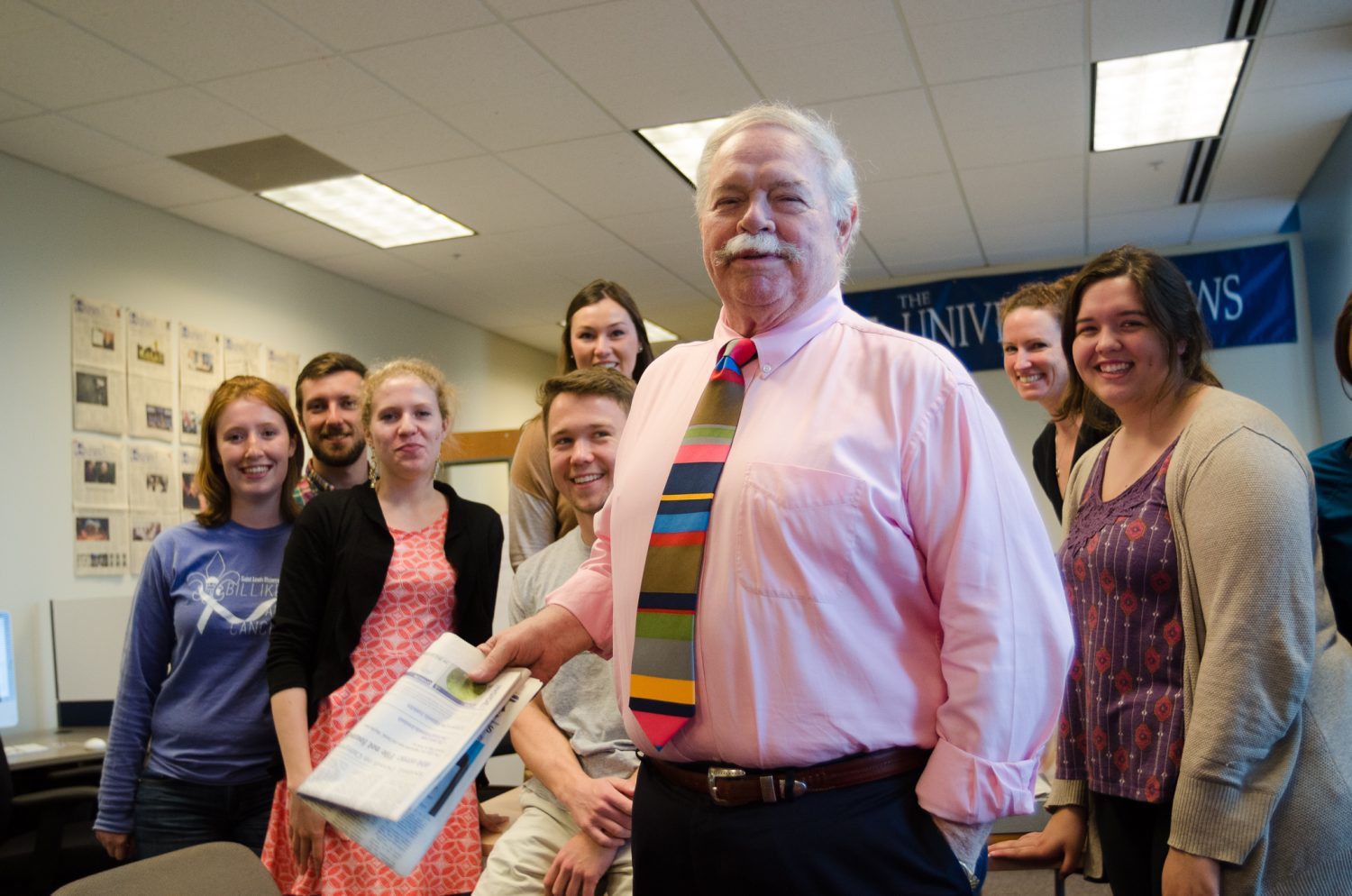Students stride up and down the Quad, toting backpacks, donning new winter coats. Some chat while they pass the library and glance at their watches. A gust of November wind rises over the hill and they shiver in unison.
The uniformity of the crowd–a herd of pea coats and warm-up pants–does not instantly reveal its cultural diversity. Look closer, however, and Saint Louis University’s diversity unfolds–different races, religions and nationalities are represented. This is not haphazard. The number of minorities on campus increases each year, and this fall international students enrolled at SLU hail from 78 countries.
“I’ve always felt that a great strength for us is diversity,” said Senior Vice Provost Ellen Harshman, Ph.D. The University recruits for diversity in its faculty as well by reaching across the nation and abroad to widen the scope of the educational experience at SLU.
There are areas, however, where SLU lacks diversity, and some of these are outlined in the North Central Accreditation’s recent report.
Conducted every 10 years, the reaccreditation process includes inquiries within the University and an inspection from an outside team of experts. The results of this fall’s report are mostly glowing, but SLU and the NCA crew targeted areas for improvement, including increasing the number of minority students and black faculty and department heads.
Harshman said that making efforts to recruit a more diverse faculty is a high priority. Provost Joseph Weixlmann, Ph.D., also helped the College of Arts and Sciences improve the diversity of its faculty, which is applauded in the NCA report. Harshman said that deans at the University attend workshops and receive literature about different ways to recruit for diversity.
Vicki Riek is a director in the office of Diversity and Affirmative Action and works with faculty and staff. According to the report on SLU’s Affirmative Action plan, the University is ahead of national averages when it comes to recruiting most minorities, but falls short retaining black faculty. Riek said that opening up searches nationwide and offering information about the benefits of living in the city of St. Louis help to attract prospective professors.
She said that 85 percent of the faculty hired last year were of minority status, either female or people of color. Riek emphasized that having a diverse faculty provides more mentors for minority students.
Shani Lenore, director of Admissions, uses databases from the ACT and SAT to find minorities. SLU offers the Calloway scholarship for black students. The number of these scholarships given each year depends on the quality of the class, Lenore said. Student diversity groups like the Black Student Alliance also provide tours and programs for prospective students. Lenore emphasized that much of recruitment involves getting students to come and visit.
“For us it’s an ongoing initiative. As the market becomes more global and society becomes more diverse, we need to make sure we’re not just representative of the community where we exist, but the country overall,” Lenore said.
International student recruitment happens at high schools, too–but in countries all around the globe. The U.S. embassies also provide information for students interested in studying in the United States. Cathy Donahue advises students coming from other countries and also students going abroad from SLU. There are 400 international students at the St. Louis campus this fall, in both undergraduate and graduate programs. This number is not down significantly from last year, in spite of the Sept. 11 attacks. Donahue said that some problems international students face when coming to SLU are adapting to the food and the big city–just like many students from within the United States. Also, international students often live off campus because University housing closes during the holidays.
The number of international students attending SLU in the past few years, however, has dipped. This includes the number of students coming over from Spain, although Spanish students remain the highest number of international students, due to transfers from the SLU Madrid campus. Donahue said that although she is not sure why Spanish students aren’t arriving in numbers as great as before, it could be because of the slouching economy and the fact that public universities in Spain are nearly tuition-free.
An additional aspect of diversity on SLU’s campus is the number of students who study abroad. SLU has expanded programs to China and to the Netherlands.
All of these facets of diversity at SLU give perspective to the seemingly homogeneous walk from class to class.





